Without further ado, we present the Top 50 Games of the 2010s

50. PERSONA 5 / P-Studio / 2016
I’m always kind of bummed out by how little JRPGs get their due outside certain parts of the web, mostly devalued by folks attributing the genre to being “samey,” or “boring,” or “weeb trash.” But if there were ever a title to help convert the unwashed masses this decade, then I’m glad it’s PERSONA 5 spreading the good word. On one end, you got a game that has you dungeon-crawl and stealth your way through the manifested psyches of terrible people to change them for the better, facing off against twisted distortions of reality and the demons that come with them. And on the other end, that very same game is a time management sim that puts just as much emphasis on going out with friends to the movies, studying for exams, and all the general mundane shit that comes with being a teenager. It’s a combination that for most shouldn’t work (after all, who wants to escape from the drudgery of real life by earning virtual minimum wage), but has such a sincerity in the places it takes you, whether it’s broaching the topics of emotional abuse and suicide, or taking in the simple joys of developing your connections with other people, that you can’t help getting strung along for the ride. Couple that with an unmatched degree of slick, neo-jazzy style and poignant social commentary, and you have yourself one of the most seminal modern JRPGs out there. [Jon Farah]
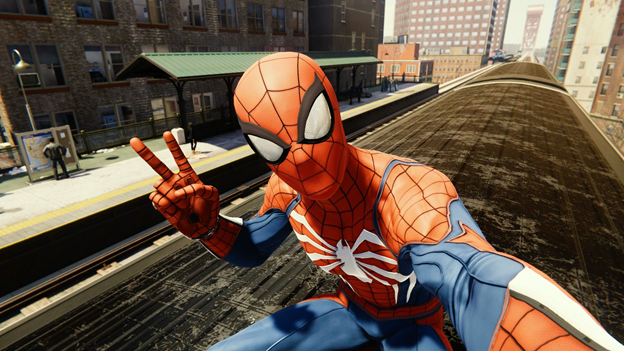
49. MARVEL’S SPIDER-MAN / Insomniac Games / 2018
I still remember staying awake until 2 AM on a school night swinging through New York in SPIDERMAN 2 on my GameCube. Naturally, I was excited to hear that Insomniac Games, developers behind RATCHET AND CLANK and SUNSET OVERDRIVE, would be creating a new, modern Spider-Man game for the current generation of consoles. And it only took three seconds of swinging to enter a world of pure video game bliss. It so perfectly translates the movement of Spider-Man, as though taken directly from my favorite comics. But I think most importantly, the game charts its own territory and breaks free of established mythos in a variety of ways, telling its own unique Spider-Man tale. At the same time, it feels so perfectly written for the modern era. This is a story about Peter Parker, trying so desperately to save the city he loves while also piecing together some semblance of a life. This game checks every box regarding excellent design: a gorgeous artstyle, crisp gameplay and design, and a heartfelt story. MARVEL’S SPIDER-MAN is gaming at its best [Jason Pedroza]
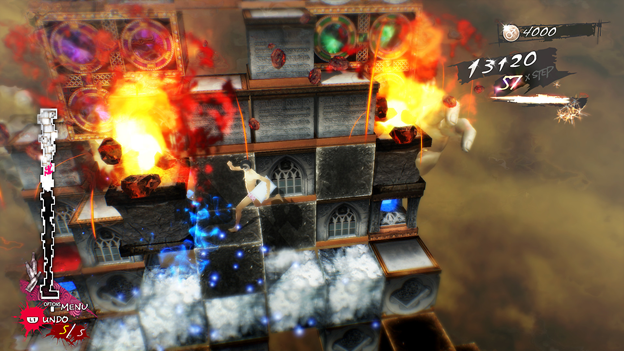
48. CATHERINE / Atlus / 2011
You can order a variety of drinks at the Stray Sheep bar, but no brew is quite as strange as CATHERINE. Originally conceived as a tech demo for the then-unannounced PERSONA 5, CATHERINE grew out to be one of Atlus’ most iconic, and by far most eclectic, standalone titles. A “romantic horror” that combines the gameplay of action-puzzlers and dating simulators and has nine different endings, there’s never a dull moment in CATHERINE’s frantic story mode. Playing as a schlub whose affections are torn between two women with the same name—one he’s engaged to, the other whom he’s cheating on her with—CATHERINE dabbles with some mature themes that would make any Persona game blush in comparison. While the twisting single-player narrative is the main attraction and endlessly replayable on its own, it speaks volumes about the puzzles themselves that CATHERINE went on to garner an active competitive scene. There’s a 2019 remake that throws in some new characters, endings, and gameplay elements, but it’s this writer’s humble opinion that the original cut is the definitive. [Ed Dutcher]
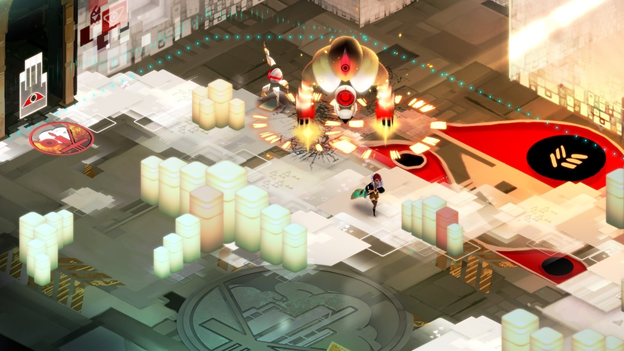
47. TRANSISTOR / Supergiant Games / 2014
Hot off the heels of 2011’s smash-hit BASTION, indie studio Supergiant Games continued to show off their penchant for isometric action with their 2013 sophomore release TRANSISTOR. Starring the celebrity singer Red and the titular Transistor, a talking sword and de facto narrator, players journey through the high-tech city of Cloudbank to recover (among other things) Red’s missing voice. Despite the similarities in gameplay, it’s a HUGE visual departure in terms of the art direction and music, with BASTION’s lush, vibrant naturescapes and folky stylings replaced by dark alleys, high rises, neon lights and an amazing ambient soundtrack punctuated by the smooth vocal stylings of Supergiant mainstay Ashley Barrett.
Notably, TRANSISTOR highlights the studio’s ability to build fascinating worlds percolating with mystery in ways very similar to its predecessor. Cloudbank is chock-full of lore—though a typical run through the main story with no detours probably clocks in at around eight hours, there are plenty of terminals, side challenges, and little detours packed in to help piece together the mysteries surrounding the Camerata, a group of Cloudbank’s luminaries, and their plans for Red and the city at large. Equal parts creative action and superb storytelling, TRANSISTOR is an easy example of indie devs finding a powerful voice in an industry dominated by giants. [Angelo Rivera]
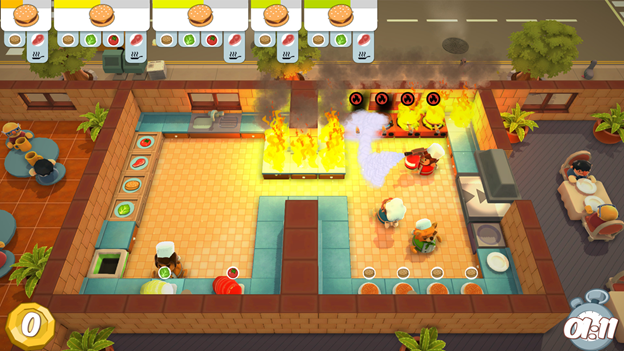
46. OVERCOOKED / Ghost Town Games / 2016
Everyone likes to be stressed for fun, right? And not just mild anxiety… I’m talking about ass-clenching, pulse-pounding, I’m-screaming-at-the-top-of-my-lungs level of a meltdown. An iPhone app managed to channel that feeling once upon a time—any SPACE TEAM fans here?—but now it’s the Nintendo Switch’s turn to turn up the heat, literally.
Welcome to OVERCOOKED, a deceptively simple, task-based job simulator that puts you behind the burger fryer of the world’s busiest restaurant. It’s all the fun of HELL’S KITCHEN, except you’re now the idiot sandwich. I may go so far as to even declare OVERCOOKED the DARK SOULS of cooking video games, if that title means anything anymore.
But as much as I joke about the wicked insanity of OVERCOOKED, it’s legitimately a fun game. Yes, you get stressed. Yes, you may lose some friends. (It’s fine, they were dead weight anyway.) But it’s also challenging. There are puzzles, there are obstacles, and there’s even a big bad. And yet, at the end of the day, it comes down to you, your reflexes, a time limit, and an endless stream of orders. Hope you can keep up! [Tracy Nicoletti]
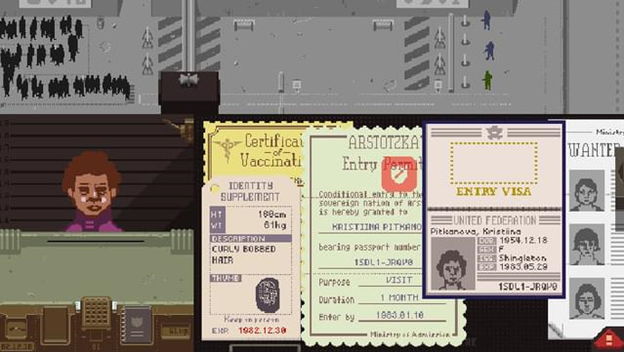
45. PAPERS, PLEASE / 3309 LLC / 2013
Part of the joy of PAPERS, PLEASE is that it’s such a hard concept to sell people on. More of a paperwork management simulator than a puzzle game, PAPERS, PLEASE derives as much joy from its atmosphere and concept as it does its gameplay. After being dropped into the shoes of a nameless border security agent for the great pseudo-Soviet nation of Arstotzka circa 1982, you’re charged with not only ensuring that border crossers have the proper documents, but also with supplying your poor family with food and heat. I’ve never made it to one of the 20 different possible endings (unless you count a dead family as an ending), but I’ve tried enough times to know that the combination of randomly generated citizens and scripted events like terrorist attacks imparts a unique sensation of gravitas into what could otherwise feel like a make-work program. PAPERS, PLEASE makes nitpicking fun, which I consider a monumental achievement. [Dan Blomquist]
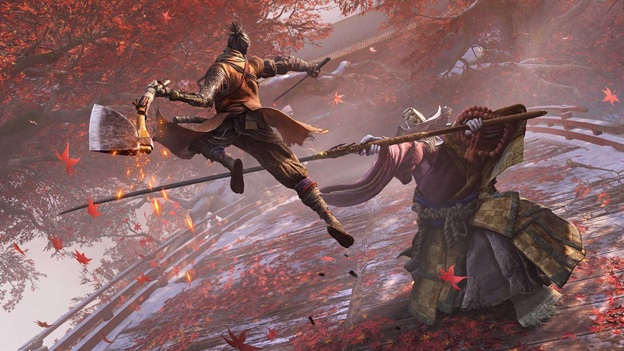
44. SEKIRO: SHADOWS DIE TWICE / FromSoftware / 2019
Let me say what I said in our previous coverage of SEKIRO: If I can beat it so can you. FromSoftware games will always have a reputation of being frustratingly difficult, but SEKIRO: SHADOWS DIE TWICE, newbies and Souls veterans agree, is a perfect channeling of that energy. It’s the most simple and streamlined game of theirs to date while also being the most polished and rewarding. Rather than poring endlessly over stats and arguing online about what the best builds are, players must study every last bit of SEKIRO’s razor-sharp and revolutionary combat system. In that classic FromSoft fashion it seems brutally unforgiving at first, but once mastered, which is surprisingly not as hard as it sounds, thousands of opportunities open up. The incredibly nuanced stance meter, which once filled allows enemies to stagger and become vulnerable to a finisher regardless of health, has allowed for players to complete the game without ever taking a real swing of their sword. Imagine, if you will, a no-attack playthrough that forces you to be more aggressive in countering, dodging, and looking for tells. As the game goes on, enemy design gets wilder, echoing Japanese folklore with intriguing twists, and those tells get harder to distinguish. That, plus SEKIRO’s story revolving around themes of death and immortality, where NPCs are troubled by how many times you’ve come back only to die again, makes the game an utter masterpiece with layer upon layer to hack away at. [Alec Larios]
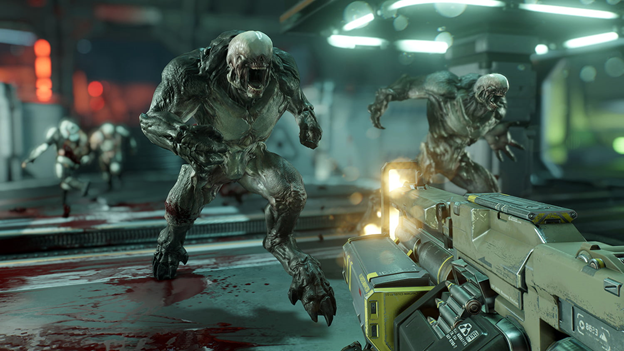
43. DOOM / id Software / 2016
DOOM is violent, visceral, and vicious. It is a game about dominating your enemies, charging into them without fear, and showing demons the definition of aggression. Players that try to cower behind walls or dance into cover will find themselves overwhelmed. We are not called Protector, Hero, or Guardian. We are the Doom Slayer. And slay we shall. In 2016, id Software so wonderfully reignited this legendary series in a way that perfectly pays homage to its predecessors in some ways, and charts a bright future in others. And as you rip and tear through hordes of demons, you navigate sprawling levels with beautiful landscapes while your heart pounds rhymically to a devilish score that seems to echo the music of Hell itself. DOOM is the premier single player FPS. It is about giving players power and letting you unleash your own kind of Hell. [Jason Pedroza]
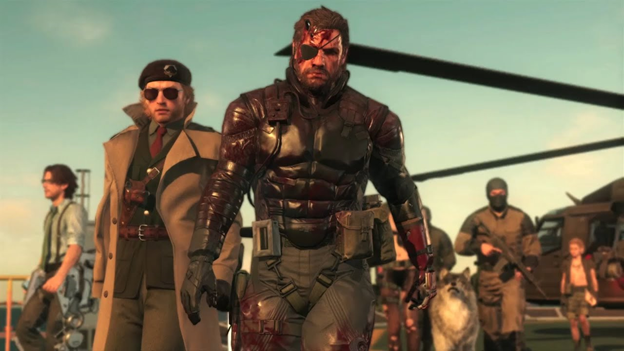
42. METAL GEAR SOLID V: THE PHANTOM PAIN / Kojima Productions / 2015
It’s hard not to get at least a little emotionally wrecked when talking about METAL GEAR SOLID V: THE PHANTOM PAIN. Constricted by the limitations of his Konami corporate overlords who eventually gave him the boot, Hideo Kojima and his devoted team still succeeded in crafting the pinnacle of tactical espionage action. The amount of moves and gadgets at Venom Snake’s disposal is seemingly endless as you traverse the absolutely huge maps the game has to offer. Complete a mission with your trusty horse, or your beloved dog, or a mech, or with the classic cardboard box, or just your fists! Even with the seams showing in incomplete segments and an ending that was heartbreakingly botched, cutting out what would’ve been an incredible boss fight both for gameplay and narrative reasons, PHANTOM PAIN is intensely fun in ways only Kojima could ever possibly imagine. I mean, it’s an MGS game where you literally get to make a zoo. What more can be said? [Alec Larios]
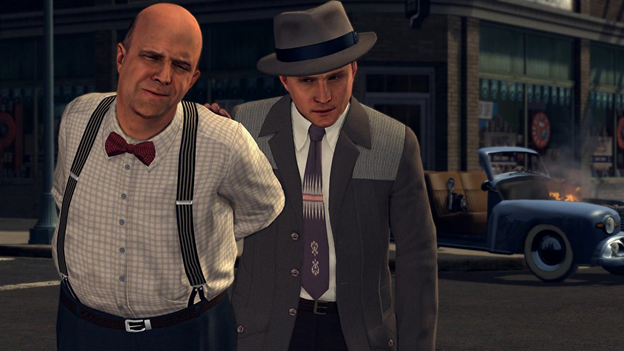
41. L.A. NOIRE / Team Bondi / 2011
What at first seemed like a mere tech demo for cutting-edge face scanning actually became one of the most unique game experiences ever made that both fascinated and frustrated the gaming community. Rockstar has always known what they were doing, but in their biggest turn since TABLE TENNIS, their combined effort with the now-defunct Team Bondi was everything but a chaotic, open-world shooter. For one, in L.A. NOIRE you actually play as agent of the law and WWII vet Detective Cole Phelps, voiced by and using the likeness of MAD MEN’s Aaron Staton (though sadly no tap dancing here), trying to solve crimes, some of which actually took place in late-‘40s Los Angeles. Of course everything from race, drugs, psychology, the encroachment of the planned highway system, and the way power trickles up rather than down plays a part in how many of these cases unfold. Each one is interesting and could very well be taken straight out of history, but what truly milks the game for all that it’s worth is by doing what Phelps calls “shaking the tree.” LA NOIRE’s face scans shine whenever you as Phelps question a suspect. Each and every subtlety of an actor’s performance can be read in multiple ways and it’s up to you to piece together what it all means, but the absolute most fun, arguably this game’s own variation of a GTA crime spree, is accusing everyone of lying on the spot and watching both Staton and whoever he questions blow up masterfully. It takes a super strong cast to pull something like this off and they manage to do it. Sure, what L.A. NOIRE excels in is nowhere near what a gamer’s game tries to do, but it definitely pushed the medium, and it’s no surprise that it has been reborn in VR. Here’s hoping for a proper sequel. [Alec Larios]
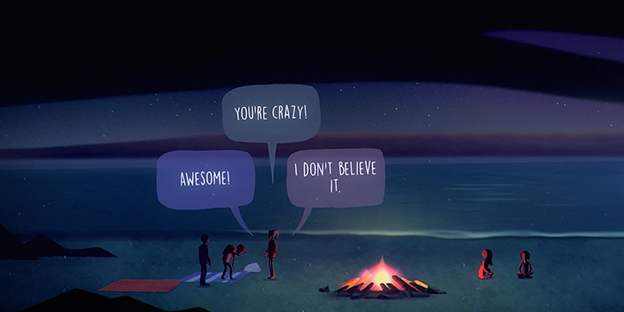
40. OXENFREE / Night School Studio / 2016
OXENFREE largely flew under the mainstream radar when it released but it quickly became an indie darling, as well as our darling. OXENFREE was the debut game of Night School studios, and focuses on how the player interacts with the other characters in the story to tell the story of Alex and her friends’ harrowing night on Edwards’ Island. Yes, it is a supernatural kids-with-a-flashlight story, but other than puzzles here and there the game is more concerned with how Alex deals with the people in her life: her friend Ren, her step-brother Jonas, Clarissa, the girlfriend of her deceased biological brother, and Clarissa’s friend Nona. It strives to be as natural as possible while still delivering the ooky-spookies, and allows the characters to check in with each other in a walk-n-talk sort of fashion that allows these relationships to play out. There’s no real “good ending” or “bad ending” depending on how you treat your friends, because most people don’t try to win or lose conversations. It’s less “Jonas Disliked That” and more “You Have Affected Jonas’ Opinion of You and Altered Your Relationship in Some Way,” but that won’t fit in the corner of the screen. The dialogue feels incredibly natural, if not twee as Hell (“This night has gone completely banana bread!”), and is a testament to the writers as well as the VO actors. Plus, it also has an incredibly distinctive sort of watercolor palette and look, which helps to cement the aesthetics and keep OXENFREE something we keep coming back to. [Steven Porfiri]
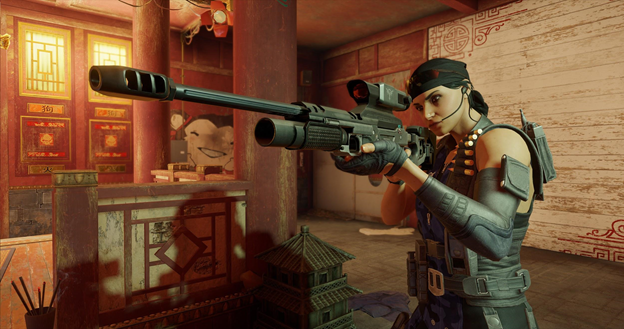
39. RAINBOW SIX: SIEGE / Ubisoft Montreal / 2015
Back in the day when the technology was still new, we thought about destructible environments solely in the RED FACTION or MERCENARIES type of way: constant toppling of whole buildings with the player as the wrecking ball. Those games were indeed a load of fun, but never did we think in a close-quarters multiplayer arena we would be more like reflex hammers or Andy in SHAWSHANK whittling away at the walls for a path to victory. This is essentially the hook to Ubisoft’s multiplayer FPS RAINBOW SIX: SIEGE. Simple but with layers (some literal), the attacking team is tasked with either capturing an area or rescuing a hostage while the defending team tries to keep them out. When merely one or two bullets can do you in, creating openings and precisely peeking through them is key. With new classes every season, each equipped with new tactical gadgets which either manipulate the environment, set booby traps, trace the other team’s whereabouts, or a combination of the three, it’s a miracle the game is still going strong more than five years in. Despite Ubisoft’s terrible reputation, the team behind SIEGE seemed to know where they were going for a good part of the decade in keeping the game fresh and interesting. What the future holds for SIEGE and its community is hard to say, but some of the best gaming moments in the past 10 years came from both boring tiny holes and destroying whole walls in SIEGE. [Alec Larios]
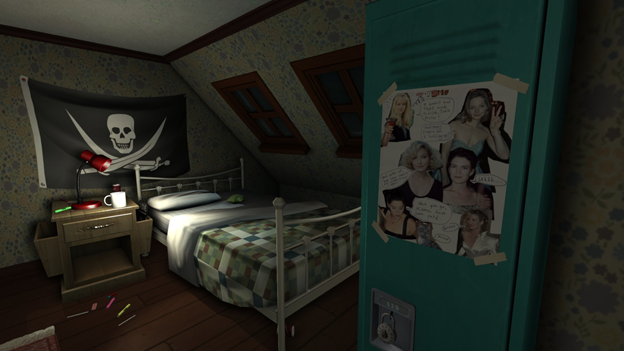
38. GONE HOME / The Fullbright Company / 2012
What is there left to say about a game like GONE HOME? It came to define a genre, derisively given the name “walking simulator,” even if that barely captures the space these games try to play in. It snuck in front of the eyes of critics when LGBTQIA+ narratives were barely covered or discussed and was largely celebrated for the deft way it represented its characters. It’s a game that marked some kind of landmark in the independent games space, but if released today would probably not make nearly as much of a splash. Like many games on this list, it came at the right time and it came in the right package. The setup was deceptively simple: returning home after studying abroad, you find your family home empty and seemingly in disarray. You explore, finding objects and journal entries to discover what exactly happened. It’s spooky at first (that the game has no real horror elements at all is still a surprise given the setting), but quickly becomes about the interactions between memories and physical space. You spend a lot of the game imagining what your sister went through and where. You notice the little details that betray character quirks of characters you know, but you the player have no familiarity with. You hold their trophies, books, and VHS recording of X-Files episodes and you imagine who they are. This is an attempt at understanding that is frequently deployed in other “walking simulators”—it’s a kind of empathy. That empathy, woven into a mystery that reveals itself to be romantic and ultimately mundane is the secret sauce of GONE HOME, and why it is among the decade’s best. [Ian Campbell]
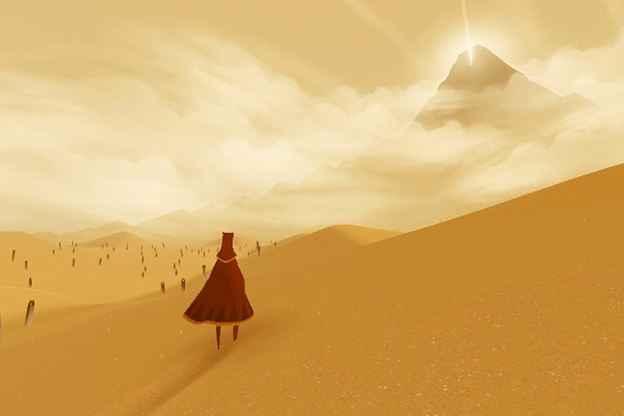
37. JOURNEY / Thatgamestudio / 2012
We may never see a game developer propose adapting Linklater’s Before Trilogy to a room full of AAA publishers, but the pitch for JOURNEY probably came pretty close to that. Perhaps the definitive “mood game,” JOURNEY is easier felt than explained. It doesn’t take more than a couple of hours for your robed wanderer to summit the mountain of their obsession, but the trek itself remains just as magical upon repeat attempts as it is the first time around. There’s not much in the way of puzzles, enemies, or obstacles in JOURNEY, and yet reaching that peak is always a cathartic achievement. Doing so with a stranger is somehow even more magical; neither player can communicate or even really interact with the other outside of twirling and chirping, but then it doesn’t take much more than a shared destination for two people to form a connection anyway. [Ed Dutcher]
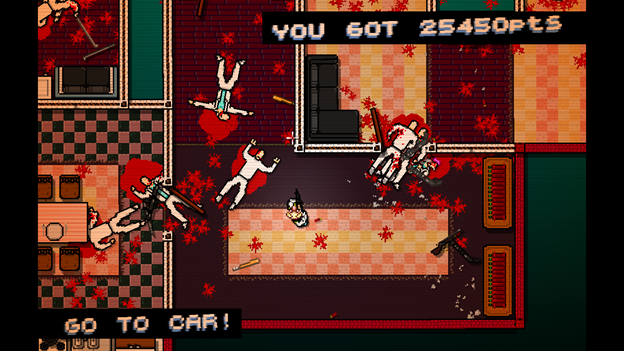
36. HOTLINE MIAMI / Dennaton Games / 2012
HOTLINE MIAMI was notable for numerous reasons, a few of them retrospective. For one it was the game that announced Devolver Digital’s arrival to the indie scene and set the tone for what they would bring into the marketplace. Games that were off-beat, sometimes visceral, and often curious, but above all games that would make players squint and mutter “Go on…” to every trailer that dropped. More importantly, HOTLINE MIAMI is fun as Hell. An almost breakneck action beat-em-up that does not skimp on the ultraviolence, there’s nothing much more satisfying than storming an apartment building and razing the thugs inside to satisfy the whims of a mysterious caller. Its use of ‘80s retrowave aesthetics still captures the imagination, along with one of the best soundtracks in games. The bright colors, thumping beats, and interludes of impending doom gives the game a dreamlike atmosphere that allows the player to slip on whatever mask they want and lay waste to dingy Miami apartments that are apparently infested with Russian mobsters. Truly, however, the piece de resistance of HOTLINE MIAMI’s mechanics is its instant respawn feature. With a get-hit-get-dead amount of health it is so, so wonderful to instantly reset the floor after misjudging a throw at a guard with an Uzi, and only adds to the frenetic feel of the game. [Steven Porfiri]

35. ANIMAL CROSSING: NEW LEAF / Nintendo / 2012
If you tire building your ten billionth house in THE SIMS, or find SECOND LIFE a bit too adult, and if you’re OCD and micromanaging is your kink, you might want to consider picking up ANIMAL CROSSING: NEW LEAF. Basically the video game version of stopping to smell the roses, NEW LEAF is, by all accounts, pretty boring. It’s meant to be. Time moves slowly, matching our world minute by minute. You’re in debt up to your tits and must resort to menial tasks like errands, fishing, bug catching, and more in order to pay back a money-grubbing raccoon tycoon and struggle out of the pitfall you’ve dug yourself into.
There’s something gleefully zen about NEW LEAF and the ANIMAL CROSSING series as a whole. You won’t need to look up any game guides. There’s no discernable end in sight. It’s just… life. But simpler, and set to lo-fi, cartoonish tunes. (Thanks KK!) It’s the runaway fantasy you’ve always dreamed—a small house in the middle of nowhere, with only animals for company. A bubble universe that caters exclusively to you. Don’t like your neighbors? Kick them out. Don’t like the terrain? Reshape it. You can’t customize as much as THE SIMS, but you sure can fill your house like a hoarder. And, like a faithful puppy, ANIMAL CROSSING will always be there, waiting for you, no matter how much time passes. You can come and go as you please, but be prepared to pull a lot of weeds. [Tracy Nicoletti]

34. HITMAN / IO Interactive / 2016
I remember first hearing of the Hitman franchise as a kid. It was like the cool older brother to the “good-guy spy” antics of SPLINTER CELL. Large maps, hard-to-nail targets: few games felt as sinister as HITMAN, a game both comical in its dress-up mechanics and macabre in its modes of body disposal. But it was only in 2016 that the franchise was truly able to spread its wings, releasing what may well remain my favorite puzzler of all time. Among the decade’s bevvy of diverse new IPs, I particularly admire how new HITMAN felt in spite of being part of a well-established franchise. And perhaps what made 2016’s HITMAN so emblematic of this decade was IO Interactive’s (initially controversial) decision to release all of its missions episodically, encouraging viewers not only to keep replaying the missions they currently had on their hard drives, but amping up anticipation for the next release like a great episode of television. In all of the 2010s, I don’t think there’s a single game I replayed quite as much as HITMAN. [Sergio Zaciu]
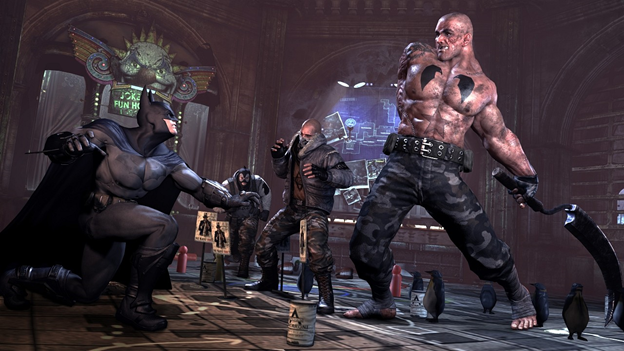
33. BATMAN: ARKHAM CITY / Rocksteady Studios / 2011
Long before the flailing DCEU, long before JOKER broke all our brains, Hell, even before Nolan’s Batman trilogy would wrap itself up, ARKHAM CITY rode tall as the definitive piece of Batman media (I hear you, DARK KNIGHT stans, and I do not care about your cries). Following up one of the most successful gritty reboots of all time, ARKHAM CITY somehow managed to improve upon a formula that didn’t leave much room to. If I may dust off my old Batman fandom, I’ll put it point-blank: ARKHAM CITY wraps up the greatest Batman story ever told, with a genuinely impressive ability to incorporate a menagerie of familiar friends and foes in a way that twists, turns, genuinely surprises, and stays true to the property’s campy comic roots. With a nearly tear-jerking finale to the star-crossed rivalry between the Dark Knight and the Clown Prince of Crime that hasn’t been matched in the canon, it’s no easy feat to have heavy-hitters such as R’as al Ghul and the Joker share center stage with a less-sung member of the rogues’ gallery such as Hugo Strange without things feeling imbalanced, but the storytelling reigns supreme, even making Calendar Man feel like a vital cog in the machine. But none of that’s mentioning Rocksteady entirely upping the ante as far as gameplay is concerned, with the combo-based combat all the more vital with larger mobs of thugs, detective work that manages to be genuinely challenging as you zip all around the city finding the Riddler’s clues, a glide mechanic that finally allows you to spread the Bat’s wings metaphorically and literally, and an oppressive, industrial setting that feels like the dystopian future that the ensuing nine years would make seem all the more likely IRL. For Batman fans, for video game fans, Hell, for anyone on this goddamn Earth, ARKHAM CITY was an early decade triumph. [Thomas Seraydarian]
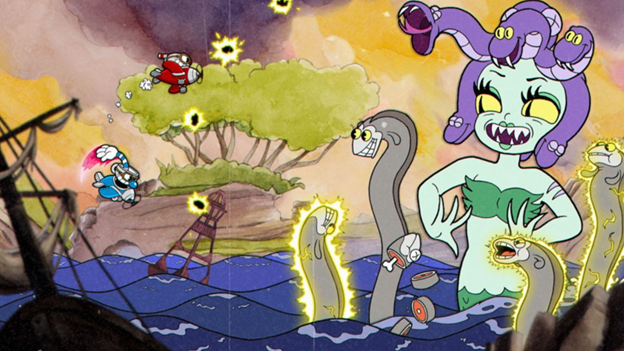
32. CUPHEAD / StudioMDHR / 2017
It took my roommate and I seven hours to kill the Devil. We spent probably 20 or so hours getting through the bulk of CUPHEAD, which was as grueling as advertised but ultimately manageable. The final level was not manageable. We raged and writhed through seven straight hours of that same goddamn level, watching Cuphead and Mugman perish and revive more times than Jesus and Goku combined. Finally, at 4:00 A.M., we parried those bloody teardrops and basked in the warmth of the final “Knockout” screen. After an eruption of jubilation, we sat back and pondered the journey that is CUPHEAD. Beyond just the sheer challenge of it, CUPHEAD demonstrates that a fresh take on an old format can sometimes lead to magic. The rubber hose animation style gives it a distinct flair, inducing nostalgia in many gamers for a time they almost certainly weren’t alive for. Visually delectable and painfully addictive, CUPHEAD delivers on its promise of being both a run-and-gun DARK SOULS and an old-school aesthetic masterpiece. [Dan Blomquist]
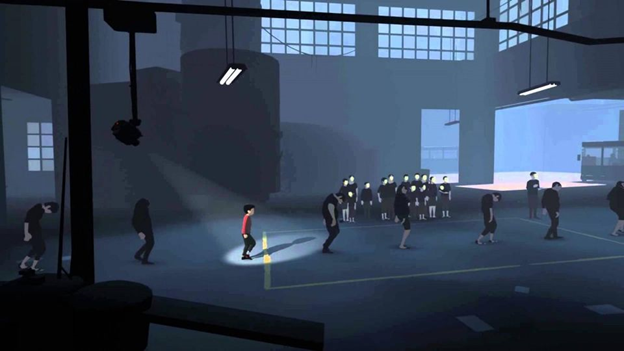
31. INSIDE / Playdead / 2016
Less is often more, and INSIDE’s skeletal story and context are part of its appeal, a vaguely unsettling, high-octane odyssey into a laboratory hiding secrets of mind-control, experimentation, and a striking engineered specimen. Picking up as a nameless protagonist unceremoniously dropped in the woods, you’ll be pursued by everything from standard-issue guards to pigs controlled by parasitic mind worms as you struggle to stay alive and determine who you are and what your purpose could possibly be. Toeing the line between grounded sci-fi and psychological thriller, a good bit of the fun is trying to parse through the clues to determine just what the Hell is going on, but that’s not all there is to be struck by over the course of INSIDE. The monochromatic psychedelia of the setting and artstyle. The reserved splashes of sound and color that pop out all the more because of their scarcity. The accessible but just-challenging-enough mechanic of controlling mindless factory drones to help you advance through the stark industrial scenarios. The quiet but no less pervasive sense of subdued melancholy that hangs like a tapestry in the background, stirring up subtly evocative lines of questioning involving identity, agency, and loss of the same. But perhaps that’s all losing the forest for the trees: INSIDE is also a game that’s absolutely effortless to get lost in, ripping out of the gate and mostly refusing to let you catch your breath, a fun binge experience with just the right amount of “What the fuck?” sensibility. What’s not to love? [Thomas Seraydarian]
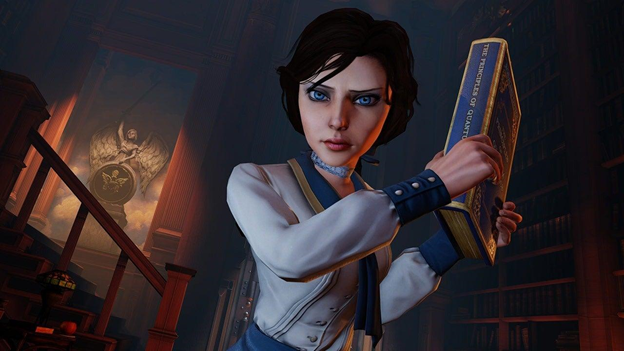
30. BIOSHOCK INFINITE / Irrational Games / 2013
It’s hard to talk about BIOSHOCK INFINITE without writing for pages on end. I could spend a great deal of time talking about the art behind Columbia, a radicalized ideal of Americana in the sky. I could talk even longer about metaphysical concepts behind the game’s spellbinding narrative. Or I could triumph the gut-punching performances behind the lead characters of Booker and Elizabeth. Instead, I’ll just say this: I love this game. I cannot imagine undertaking the daunting task of holding a candle to the legendary BIOSHOCK, but the team at Irrational Games took things out of the ocean and into the sky and created a truly modern fairy tale with their follow-up. It plays out like an adult Disney film, but the true masterstroke of this game (like the first game) is its necessity to be played as a game. Only as a piece of interactive entertainment does it reach a conclusion with such powerful resonance. You are Booker Dewitt. His choices are your choices. And as you shoot through your enemies and burn down bosses with flaming Plasmids, you form a staggering genuine connection to the characters and the world of Columbia. Play this game, and play it slow. Let it wash over you and you’ll have a gaming experience you’ll never forget. [Jason Pedroza]
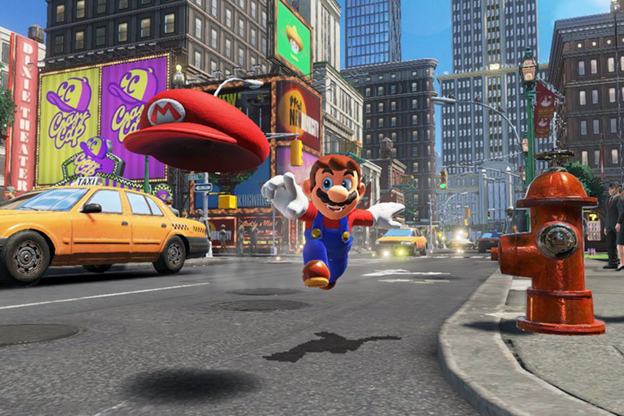
29. SUPER MARIO ODYSSEY / Nintendo / 2017
Honestly, Cappy kind of creeps me out. Lacking the sheer cuddliness of Yoshi and the sleek efficiency of FLUDD, Cappy feels like the end result of a days-long Nintendo marketing team meeting that ended with “Fuck it, we’re just gonna put eyes on the fucking hat.” Fortunately, Cappy is far more fun to play with than to look at. SUPER MARIO ODYSSEY lives up to the grandeur of its name, packed to the gills with a huge variety of platform challenges, stylish outfits, and the bangin’ swing ditty “Jump Up, Super Star!” Beyond being aesthetically soothing, the core gameplay gets a much-needed shakeup via the enemy control mechanic. Everything from the hapless Goomba to the mighty Bullet Bill can have its brain hijacked by Cappy, each with their own specific controls and abilities. Spread across 15 unique kingdoms, each with their own set of enemies and challenges, not to mention a sprinkling of 2D mini-games that pay homage to Mario’s roots, ODYSSEY contains multitudes while still being accessible to kids who just wanna beat Bowser’s ass and call it a day. A rare gem that appeals to all ages without gimmicks or DLC, ODYSSEY earns the right to be called the definitive Mario game of this era. [Dan Blomquist]
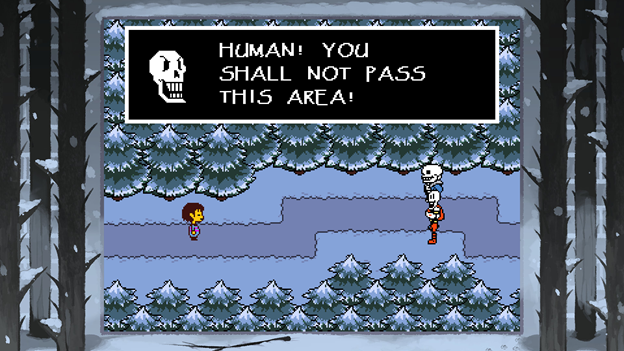
28. UNDERTALE / Toby Fox / 2015
For as much “innovation” and gaudy spectacle the AAA industry has brought to gaming the past 10 years, you’d be hard-pressed to think a simple offering like UNDERTALE could hold a candle, much less retain such a massive following after initial release. But as I and millions of others have discovered over the past five years, UNDERTALE is truly a master of subverting expectations in all the best ways. Inspired by the likes of EARTHBOUND and MOTHER 3, this indie gem developed by Toby Fox created an experience that took the tropes and clichés that define the RPG genre to this day and turned them on their head, all with a tongue-in-cheek sense of humor. More importantly, though, UNDERTALE is a game that toyed with our preconceived notions of how a roleplaying game should work; is violence really the only means of progression? What if the monster obstructing your path has a wife and kids, or is the local librarian? What if the terrible deeds you performed on a whim never truly go away, even after you reload your save file to do things the “right” way? These questions and more linger on the player’s mind in and out of your time exploring the Underground, getting us to think about our choices not only as a means of pushing ever forward, but the moral implications of doing so. And while the cheeky humor and colorful characters are thoroughly entertaining in their own right, it is the metacommentary this unorthodox game creates, its look at player agency, empathy, and what it means to be a good person, that make UNDERTALE one of the most noteworthy experiences of the 2010s. [Jon Farah]
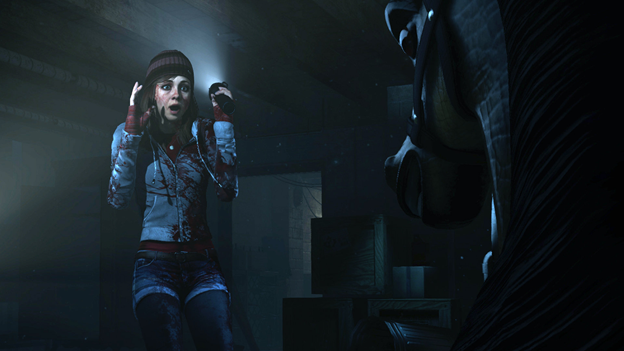
27. UNTIL DAWN / Supermassive Games / 2015
Elsewhere on this list I claim that Capcom’s RESIDENT EVIL 7 was horror gaming’s premiere blockbuster outing of the decade, but UNTIL DAWN might very well be the most fundamentally entertaining. Though video games are certainly getting more immersive and interactive, with an obvious increase in online connectivity and teamwork, the decade still didn’t have many outings that brought us together in the traditional sense of the word. But for Fall ‘15 in my college apartment in Santa Ana, UNTIL DAWN did the impossible and got five or six people to gather around and watch in rapt silence, hooting, hollering, and backseat driving all the while. Focusing on a group of eight young adults trapped in a mountain cabin, UNTIL DAWN is a vanguard of “interactive drama,” giving each of the characters you assume control over their fair time in the sun, deftly setting up a sprawling butterfly effect of scenarios that gave each subplot its own unique pacing, tension, and frights. Both impressively setting up an endless impetus for repeat playthroughs and making what seems like the most mundane option a nail-biting bout of second-guessing until the very last second, there were few other games that are sure to electrify a group. That’s not to mention the overall horror trappings of the project, which perfectly fit the aesthetic and tone of the campy, overblown slashers of the late ‘90s and early aughts. Certainly not for the faint of heart, UNTIL DAWN was regularly shocking in its gory extremity, with creeping passages of psychological screw-turning and jump scares alike. Topped off with the excellent cast of actors (Rami Malek! What!) and probably the only time the wendigo has enjoyed its time in the sun of a convincing horror antagonist, UNTIL DAWN is one of the decade’s most enjoyable ways to kill time with some friends. [Thomas Seraydarian]
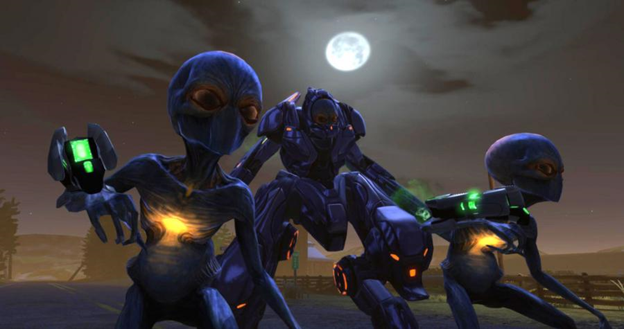
26. XCOM: ENEMY UNKNOWN / Firaxis Games / 2012
A tonal 180 for a developer best known for its grand, millenia-spanning empire simulators, XCOM is at once a dream come true and living nightmare for micromanagers everywhere. In CIVILIZATION, neglecting to switch one of your city’s focuses from harvesting to production might mean you’ll wait an extra turn or two for that galleon to be constructed. In XCOM, moving one extra tile can be the only thing standing between a team of characters you’ve invested dozens of hours in developing and total annihilation. In a decade of ultra-difficult games, perhaps no other was less forgiving. XCOM manages to make even the smallest mistakes feel apocalyptic in significance, which is why any victory the player can wring from it that much more exalting. There are few reliefs more sweet than seeing a bloodied squad leader limp onto the dropship just as it evacuates, living to fight another day. When any encounter can end with the destruction of the planet, it’s these small victories that feel the biggest. [Ed Dutcher]
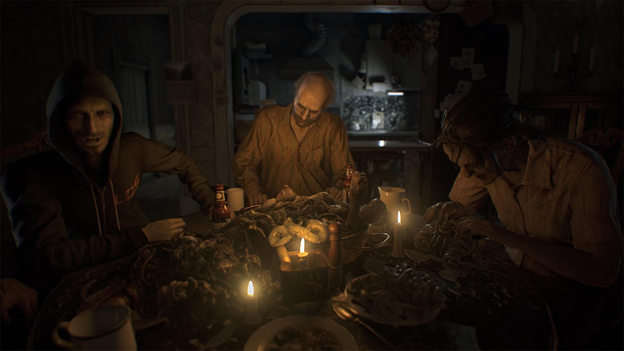
25. RESIDENT EVIL 7: BIOHAZARD / Capcom / 2017
When RESIDENT EVIL 7: BIOHAZARD dropped almost exactly three years ago, I was living in the South Bay. But the night that it was going to make it onto the big screen at our Film Editor’s house in the Valley, without a second thought I made the trek on a work night to not miss out. It was remarked upon that I wouldn’t do that for anything else, and it’s a sentiment that holds true—from the get-go, RE7 felt like something with presence. Something with weight. Something with power. Eschewing the more action-oriented trappings of previous installments, trappings that you wouldn’t be wrong to claim diluted the appeal, RE7’s return to nail-biting survival horror roots saw protagonist Ethan Winters go searching for his missing wife Mia, only to soon find himself in the clutches of the sinister Baker family. Almost inarguably horror’s premiere blockbuster outing of the decade, RE7’s horrific home-cooked Southern gothic gumbo leapt out of the gates and rarely let up, featuring one of the most striking opening chapters in horror gaming history—that early battle with Baker patriarch Jack still hasn’t been matched as far as pure adrenaline overloads go. But perhaps what stuck with me most about RE7 was the wide variety of playstyles and horror mechanics it managed to juggle, from the virtually weaponless hide-and-seek terror of staying away from Marguerite, to the action-thriller stand-offs with the Molded grunts littering the basement (featuring the franchise’s mandated bullet conservation, of course), to the psychotropic orgy of a conclusion that brings back franchise favorites as a final cavalry. Topped off with an engaging story with plenty of twists and turns, gunpoint moral decisions that will leave you second-guessing, bonus scenarios that knock it out of the park across the board, and graphics that can only be described as an achievement, RESIDENT EVIL 7 more than earns its place on this list and consideration from you, dear reader. [Thomas Seraydarian]
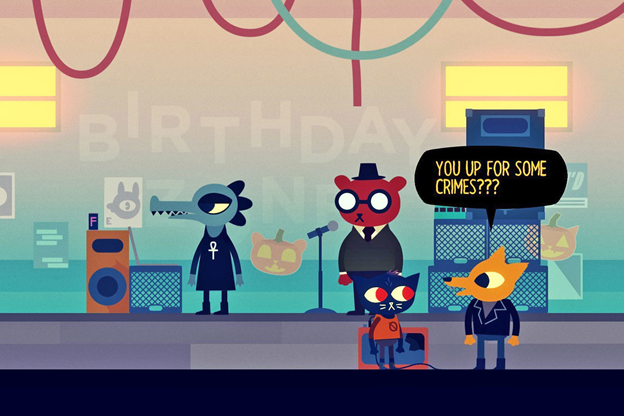
24. NIGHT IN THE WOODS / Infinite Fall / 2017
Relating to the existential malaise of a young, down-on-their-luck cat is an excellent experience. It makes complete sense and feels very natural, actually. I feel the same way about hanging out with a friend who is a fox, or playing in a band with an alligator and a bear. NIGHT IN THE WOODS offered all these pleasures and more. It’s a coming-of-age story set in a Richard Scarry-ified Rust Belt. It’s about the difficulty of changing course and moving back home, along with the gnawing pit of fear that’s at the heart of capitalist society. It’s a platformer with several mini-games; you could even go as far as to say it has a branching narrative (which friends you spend time with in the game does matter in its way), but it’s not revelatory in terms of gameplay. Where NIGHT IN THE WOODS shines is in its writing. There’s a reality constructed in the fictional town of Possum Springs. The animals feel real, they have distinct personalities and beliefs, distinct ways of speaking. There’s a beautiful use of language throughout. NIGHT IN THE WOODS is humorous, but soaked in the kind of sadness that directly reflects the world we live in.
Other independent games have had the outspoken politics or beautiful art style of NIGHT IN THE WOODS, but they haven’t occupied the same amount of space at the right moment and they haven’t been nearly as online as the creators of NIGHT IN THE WOODS were. NIGHT IN THE WOODS is one of the few popular games at the end of this decade that captured the frustration with the system as it exists and the stubborn refusal to do anything about it. It’s one of the few games that gets why young people today are disillusioned and how the old folks who criticize them for feeling that way are even more so. The game doesn’t reinvent the wheel, but you don’t need to reinvent the wheel to make an impactful game: sometimes all you have to do is elegantly outline instructions for breaking the wheel and building what’s next. You have to hold tight to what matters and try. [Ian Campbell]
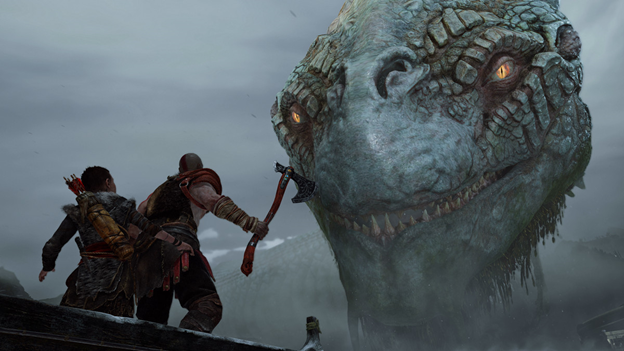
23. GOD OF WAR / SIE Santa Monica Studio / 2018
I don’t think there’s a game this decade that’s managed to reinvent a whole series’ identity quite like GOD OF WAR (2018). Whether or not it’s a “good” change for hardcore fans ultimately boils down to preference, considering the series’ pedigree as a mindlessly brutal hack-n-slash escapade. But for the rest of us, the evolution of the material into a quasi-cinematic, emotional journey in addition to a cathartically violent rampage is more than welcome. The Kratos of yore, whose entire identity effectively boils down to “Local Spartan Murders Everything, Still Angry,” has tempered with age, becoming more nuanced in the process: he must care for a son that he barely connects with and teach him how to survive in a cruel and unforgiving world, yet prevent him from ending up just as cold and vengeful as dear ol’ dad. And in a very on-the-nose attribution, Kratos’ maturation since his last outing reflects the studio as a whole. His relationship with the innocent Atreus and their separate means of processing grief, which only deepens as the player explores and traverses a vast world full of Nordic myths and monsters, gives the game an empathic impact that very few other games this decade have delivered, especially in the AAA department. And even if you choose to exclude what is a very gripping narrative, the game delivers the same level of addictively intense, gory combat that defined its predecessors, just with a fresh coat of paint (or god entrails, if we’re being brand-accurate). All said, GOD OF WAR is the best of both worlds, retaining the DNA of what made the original series such a success, while building it up to be so much more than anyone expected. [Jon Farah]
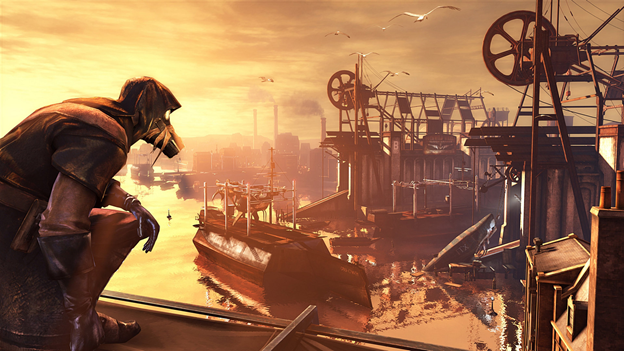
22. DISHONORED / Arkane Studios / 2012
You take some parts THIEF and some parts ASSASSIN’S CREED, mix in a healthy amount of steampunk and magic, and you get DISHONORED. Published by Bethesda before The Bad Times, this quest for vengeance is notable for open-ended playstyles that provided tons of replayability. In Corvo’s quest for redemption there were always two methods of termination for each architect of his downfall: a nonlethal way that might humiliate or ostracize them while otherwise taking them out of the picture, or a plain ol’ butterfly knife to the throat, and there were several ways to accomplish each. Do you want to teleport or blink from spire to spire, lift the keys off an unsuspecting guard, unlock the quarters of the highest religious authority and brand him as a heretic? Or do you want to charge in, a whirl of blood and steel, and just cut this dude’s head off? Either way is valid, but the game does punish players for their lack of subtlety; not only will you get The Bad Ending, but the game itself becomes more difficult as more bodies laying around means more plague infestations. All-in-all it’s a blinking good time, and affords the players that mind their vision cones the opportunity to feel like a truly badass assassin. [Steven Porfiri]
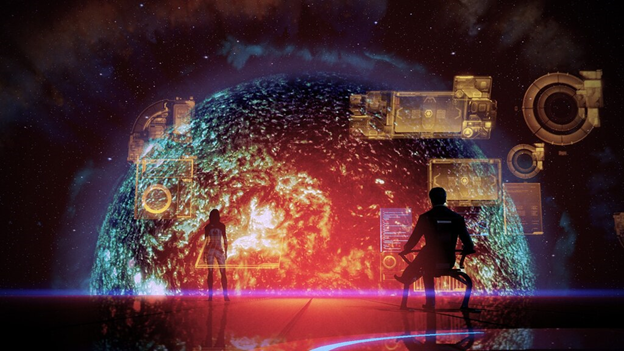
21. MASS EFFECT 2 / BioWare / 2010
Almost any trained writer will tell you the single most important part of a story is character. In this EMPIRE STRIKES BACK sequel to the first MASS EFFECT, BioWare put all of its emphasis on character. After a pulse-pounding opening, you, Commander Shepherd, are tasked with putting together a team for a suicidal attack on a galactic enemy. As far as plots go, it’s fairly simple and doesn’t do much to surprise. The game instead cares much more about building relationships with the fascinating characters of your team. Each of them has a rich story and the choices you make will dictate how their story plays out. My favorite memories during the entire MASS EFFECT series are all during this game’s Loyalty missions, which act as the culmination of each of these characters’ stories. And it’s all done so that the Suicide Mission becomes that much more terrifying because you aren’t standing besides random NPCs, but friends that you’ve grown to adore over all the hours you’ve spent with them. This sequel improves on every aspect of its predecessor in terms of style, gameplay, and just overall presentation. But it is remembered and revered as a master class in character design. [Jason Pedroza]
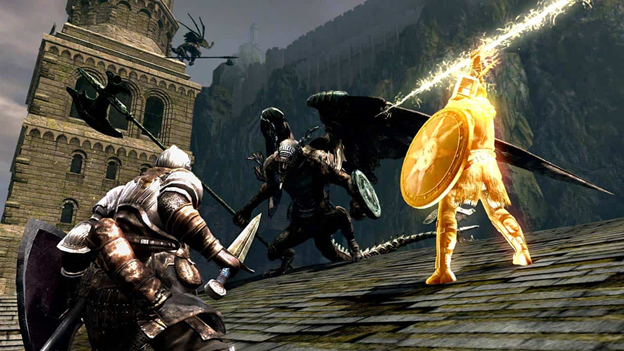
20. DARK SOULS / FromSoftware / 2011
No other title is likened to more in video game analysis than the seminal DARK SOULS. FromSoft has been making punishing, deliberately-paced RPGs since 1994’s KING’S FIELD on the original PlayStation, so it was to everyone’s surprise when they finally struck oil with that series’ spiritual (great-?) grandchild. That success would go on to spawn an entire subgenre of action RPGs that, while the exact definition or even name of which (Soulslike? Soulsborne?) is in desperate need of fine-tuning, is undeniably still one of the hottest formulas in gaming nine years later. Its ubiquity can’t be overstated, “the Dark Souls of _____” a title that has been applied to all kinds of games. But what defines the original DARK SOULS beyond the difficulty? It ignores the overwhelming mystery of the land of Lordran, a realm where even the rubbish holds hidden value. It erases the thrill of discovering a secret passageway using a cryptic clue or some esoteric maneuver. It strikes from memory the jolly cooperation provided by charitable online players, or that feeling of dread upon finding an invader standing between you and a bonfire. While future titles by FromSoft and others have reworked and refined the combat and exploration, these are the elements that DARK SOULS has remained unrivaled at creating. [Ed Dutcher]

19. P.T. / 7780s Studio (Kojima Productions) / 2014
It’s a little ironic that I’m writing to you about P.T., considering that I never actually played it. You see, I’m a bit of a wimp, but I know a good game when I see one, even if my fingers are covering my eyes. I probably sat through at least a dozen playthroughs of P.T. with countless friends. My PlayStation remains the only console in my orbit that actually has the game installed (for those not in the know, P.T. was swiftly removed from the PS Store after Hideo Kojima’s beef with Konami had him running for the hills to go make a game in which you literally run around on hills), and as such became somewhat of a coveted item amongst fellow gamers. But back to P.T.! The brilliance of Kojima’s project boils down to how impenetrable its design is. In a decade that saw a skyrocketing of video-game literacy, it’s quite telling how hard it was for diehard gamers to really figure out what the hell P.T.’s triggers were. The fact that Reddit forums were breaking down the game’s core functions turned this tiny, free-to-play horror ride into a deeply communal experience; a populist revival of the days of Nintendo Power. [Sergio Zaciu]
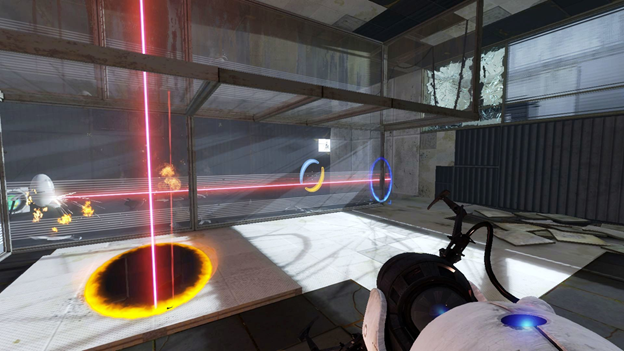
18. PORTAL 2 / Valve / 2011
The Mother Of All Sequels. Distilling everything that’s perfect about Valve’s teleportation-driven mindbender into a single block of text is as much a challenge as anything GLaDOS can cook up, seeing as I can’t think of another game that made me feel joy in all aspects of its design. Much of that has to do with just how much PORTAL 2 exceeded my every expectation. 2007’s PORTAL was already a landmark title while clocking in at a meager three-hour average playthrough. The follow-up act was bigger, bolder, and badder in every way. Compelling arguments can be made that PORTAL 2 is either the most tactile puzzle game or the brainiest first-person shooter ever made; the fact that both of these are valid points proves the game’s universal appeal. Few video game weapons are as satisfying as the Aperture Science Handheld Portal Device, and PORTAL 2’s extensive applications for the gun made it a modder’s dream come true. Clever writing and macabre humor provide the icing on top, largely thanks to the stellar vocal talents of Ellen McLaine, Stephen Merchant, and JK Simmons. Devoid of any pretension, this is simply one of the most rollicking adventures in gaming. [Ed Dutcher]
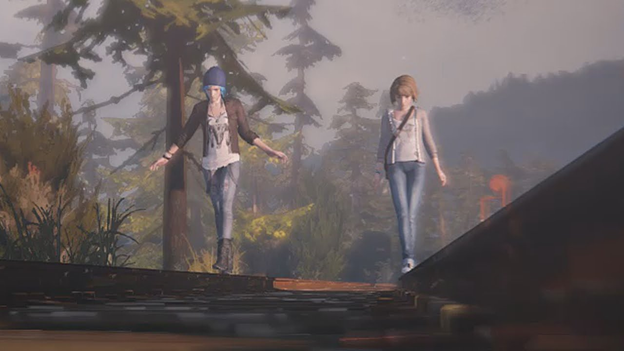
17. LIFE IS STRANGE / Dontnod Entertainment / 2015
I’ll never totally understand why it took until 2015 for a studio to release the game I had always been waiting for. A game without guns, car crashes, or murderous psychos… Okay, so maybe LIFE IS STRANGE did boast a peppering of all those aforementioned quirks, but that was never Dontnod’s central focus. In what I would define as a “social game,” LIFE IS STRANGE’s choose-your-own-adventure style of interactive cinema certainly didn’t seem like anything groundbreaking in the wake of Telltale’s THE WALKING DEAD, but with each ensuing episode and its loving depiction of high school angst, it always felt grounded in a reality that no other video game before it had. Considering how many video games are about lone wolves saving humanity or fighting an unrelenting evil, there’s something really humbling about a game that studies the friendship of two high school girls with grace and nostalgia. [Sergio Zaciu]
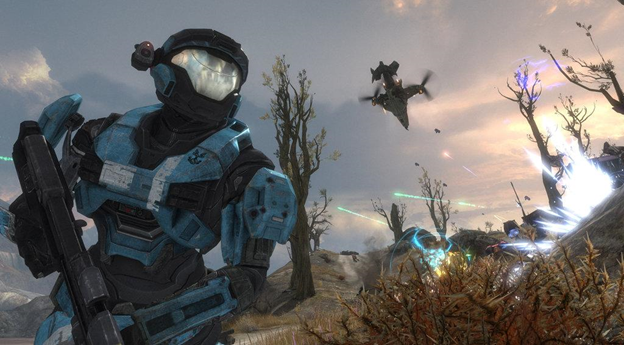
16. HALO: REACH / Bungie / 2010
HALO in its most perfect form, HALO: REACH begins and ends the decade as the greatest Halo, and perhaps even the greatest video game. This was a beautiful last hurrah from Bungie, who finally figured out the core of what made their record-breaking franchise so fun. Fueled by a narrative steeped in the lore established by the novel, your role as the newest recruit in Noble Team’s group of Spartans is never lost as you traverse countless breathtaking vistas packed to the brim with expansive battles showcasing the planet Reach’s fall. Nothing beats the feeling of triggering the slick assassination animation on an elite, hopping into a Ghost to splatter unsuspecting grunts, and blowing up a giant Phantom to pieces, all while Marty O’Donnell’s fantastic score swells up. It’s an indescribable feeling. The sheer number of options one had in approaching a shootout in HALO has yet to be matched and REACH was where it was most apparent. Bungie’s map designers, who toiled day in and day out for a decade studying the art of the game’s combat, hit their peak on REACH. It’s pure gaming nirvana if there ever was one. Yeah, it’s remastered now, but if you were there, you were there. [Alec Larios]
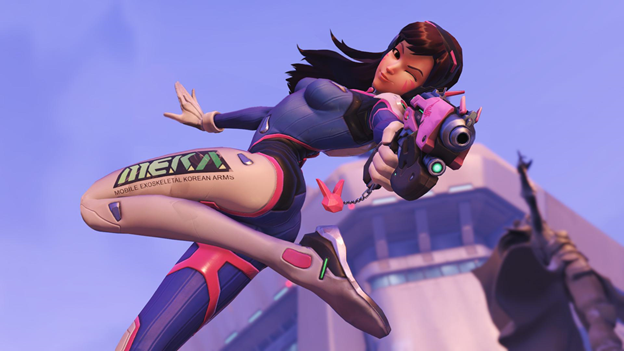
15. OVERWATCH / Blizzard Entertainment / 2016
Multiplayer FPSes have been around the block, and, for the most part, the recipe hasn’t changed. Mixed bag teams of heavies, snipers, and soldiers clash repeatedly over control points or captured flags. It’s kill or be killed. And Blizzard’s OVERWATCH doesn’t really challenge that formula. So why do I find myself drawn back to it, week after week, month after month?
OVERWATCH is well-developed, with fun, futuristic environments and a roster bursting with dynamic, engaging, international characters. It translates well into animated shorts and comics, so the game feels like it has a life outside of the grinding PvP matches. It’s inspired shipping, fanfics, art, costumes, and popularized its own brand of cyberpunk. If that’s not transmedia, I don’t know what is.
With every year, the game also continues to expand. New, seasonal skins and game modes, like Mei’s Snowball Offensive and Lucioball, inject it with new life. And, with an ever-expanding lineup, OVERWATCH’s game mechanics are constantly challenged. New champions and heroes not only introduce exciting, unique chapters into the OVERWATCH lore, they also blend warrior classes and bring balance, countering specific attacks and abilities that might seem overpowered. It’s an FPS that gets you to think, to strategize, keeping you on your toes as you anticipate the next curveball that will come around the bend. [Tracy Nicoletti]
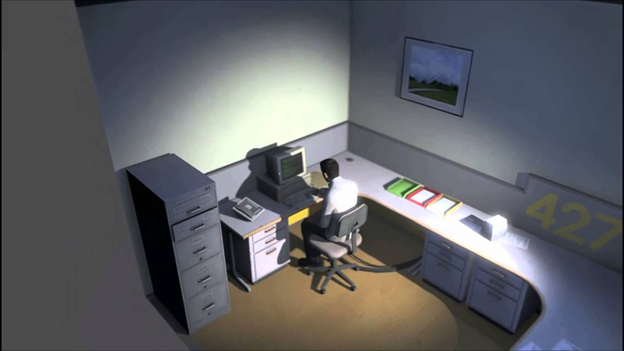
14. THE STANLEY PARABLE / Galactic Cafe / 2013
THE STANLEY PARABLE is a true gamer’s game, a love letter to side-questers, speedrunners, achievement hunters and Easter egg collectors. Superficially a walking sim that loves to break the fourth wall, THE STANLEY PARABLE only begins to shine when the player begins to disobey the charmingly omnipresent narrator. At its heart, this is a game that is meant to be broken by the player, whether through ignoring their assigned directions, or taking them incredibly literally. As a parody of narrative game design—no, media as a construct—it’s in a league of its own, glibly anticipating any and all shortcuts or other leaps of “game logic” the player may take and pieing them in the face as a reward for their perceived cleverness. Demonstrating a perfect mastery of its medium, THE STANLEY PARABLE is required playing for anyone seeking to create their own game. [Ed Dutcher]
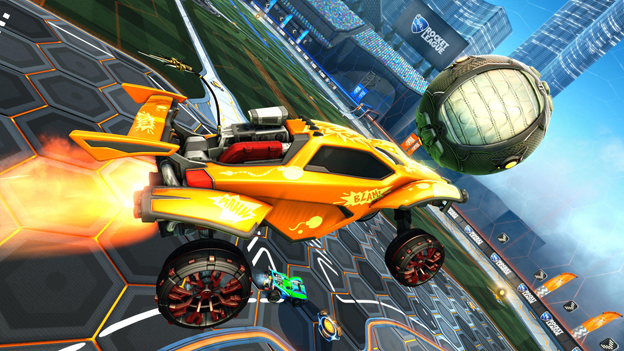
13. ROCKET LEAGUE / Psyonix / 2015
It’s soc-car. Get it? Soccer, but with cars? The sport of football, commonly referred to as soccer in the US, but with motor-powered vehicles? ROCKET LEAGUE really is just that simple. But a game doesn’t need to be complex to be worthy of critique, and it certainly doesn’t prevent it from being loads of fun. Psyonix first dropped SUPERSONIC ACROBATIC ROCKET-POWERED BATTLE-CARS in 2008, which was basically the same game, but only available for PS3. I’d imagine the main barrier to SARPBC’s success was that mouthful of a title, so the rebranded, two-word sequel in 2015 launched into stratospheric popularity across all platforms. I can barely parallel park, and that lack of driving expertise translates to the soccar field. While I’m not nearly good enough to compete online, I can still get a thrill out of playing with an experienced friend and trying to destroy the other cars. It’s not exactly how the game’s meant to be played, but the fact that I can enjoy online play as a baddie is a credit to ROCKET LEAGUE’s beautifully simple versatility. [Dan Blomquist]
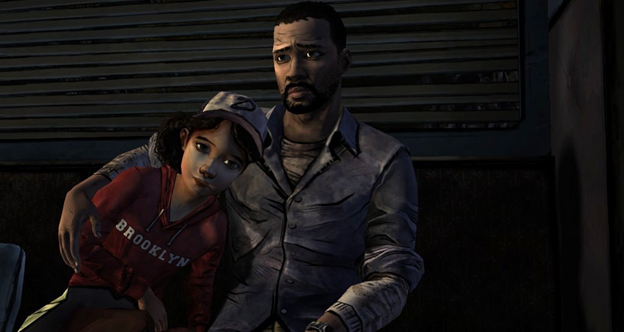
12. THE WALKING DEAD / Telltale Games / 2012
While the TV show holds the most mindshare as an adaption of THE WALKING DEAD comic series, it’s the video game adaptation, Telltale’s THE WALKING DEAD, that actually captured the depth, nihilism, and theme of human perseverance that made the comic a critical hit. THE WALKING DEAD is technically a point and click adventure game, one that was delivered episodically and has appeared on every possible platform, but in terms of play experience, it most resembled an interactive choose-your-own-adventure novel. THE WALKING DEAD covered Lee Everett’s efforts to protect and survive alongside a young girl named Clementine. An original narrative set in the world of the comic that would occasionally feature guest appearance of favorites for fans familiar with the series. It was equal parts surviving the apocalypse, dealing with the politics of the American South, and raising a “child.” It was impressive that the game tried to tell a story with more momentum than the TV series could ever muster, but even more so, the promise that all the choices in the game mattered was a deeply exciting idea, even if the veracity of that claim was rightfully questioned.
THE WALKING DEAD brought the visual novel genre briefly into the mainstream, it poured gas on the long dead fire of the video game adaption of a popular media franchise, and the success of its parent company and later, the utter executive mismanagement of it, ushered in dozens of talented developers into the independent scene. THE WALKING DEAD was a reminder that story could matter in scales more personal than the bombast of the AAA space and that people were more than willing to affect it directly, rather than being taken along for the ride. It rode the wave of a truly cliché genre obsession and even though it stumbled, it made a mark that won’t long be forgotten. [Ian Campbell]
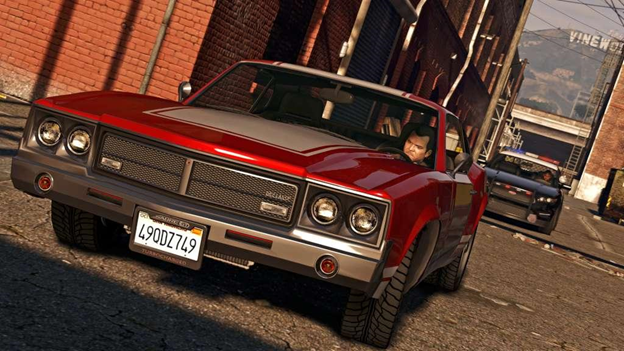
11. GRAND THEFT AUTO V / Rockstar North / 2013
Rockstar has always been the developer I closely associated with cinema. VICE CITY was a SCARFACE and MIAMI VICE-type, SAN ANDREAS a gangsta rap come-up story, and GTA V a Michael Mann ensemble thriller. Considering that GTA V (bafflingly) still advertises its online mode on Facebook and Instagram, it’s really no surprise that it’s among the decade’s most essential outings, quite possibly the single most popular game to ever exist. Rockstar Games has always been an A+ content factory, delivering razor-sharp writing and excellent game mechanics in spades. And though everyone seems to unanimously agree that a Rockstar open world puts most of its railroaded story missions to shame, it’s pretty incredible how consistently every Rockstar release finds a way to throw in something new into the fold that a prior outing hadn’t tried before. In the case of GTA V, it was its three-variable protagonists, each spread on different sides of the map, engaging in their daily lives with or without your input. It’s the most alive any game had felt at that point in time, and could surely still compete against any recent open world action game in terms of immersion. Hell, I bought the game a second time just so I could try the damn thing in first person on my PS4! The wackjob story, the excess violence, the banger soundtrack. I mean… It’s GTA, need we say more? [Sergio Zaciu]
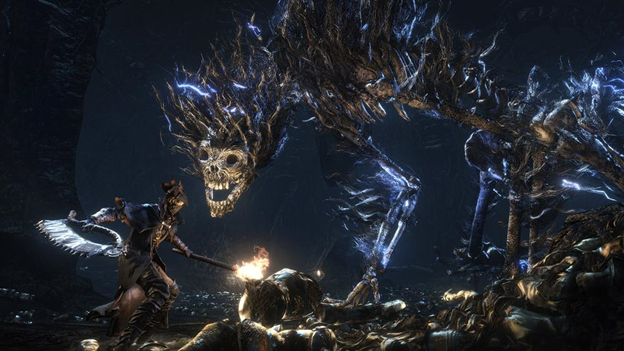
10. BLOODBORNE / FromSoftware / 2015
So, let’s be real here: DARK SOULS may be the game that earned FromSoftware its (deserved) household name status, but it’s ultimately BLOODBORNE that steals the show when representing the very best the developer has to offer. This edgy, goth younger brother of the Soulsborne family not only capitalizes on the aspects that we all come to expect from DARK SOULS, the cryptic storytelling, punishing gameplay, interconnecting level design, and palpably dour atmosphere, but effectively cranks them up to 11, gifting us with arguably one of the most intense gaming experiences of the decade. Every claustrophobic corner and nightmarish visage populating the streets of Yharnam oozes with twisted character, carving out a unique identity from the medieval niche DARK SOULS and its copycats occupy by blending equal parts Bram Stoker and H.P. Lovecraft to deeply haunting effect. The game’s worldbuilding and level design are in a league all their own, tantalizing us with uncovering new details of the game’s underlying mystery while at the same time making us afraid to see what new ghastly terror lurks beyond, frantically searching for some secret shortcut back to the safety lamp. And where DARK SOULS’ challenge can be mitigated through a defensive approach like hiding behind a shield, each encounter in BLOODBORNE forces players to be up close and personal with the horrific beasts out on the Hunt, rewarding those who play aggressive, react quickly, and trade blows with equal parts cunning and ferocity. This game may not boast the same level of notoriety as the one that set FromSoft down the path to popularity, but it sure as Hell deserves its time in the limelight now. Always remember, dear hunter: fear the Old Blood. [Jon Farah]

9. NIER: AUTOMATA / PlatinumGames / 2017
When the former Crossfader Magazine (RIP) announced its list of 2017’s Games of the Year, I’ll admit—I was a little skeptical to see NIER: AUTOMATA standing alone at the top. We’re talking about a year punctuated by THE LEGEND OF ZELDA: BREATH OF THE WILD, SUPER MARIO ODYSSEY, and a torrent of other illustrious titles (oh, and the horrifyingly captivating DOKI DOKI LITERATURE CLUB!). I was justifiably suspicious of its placement. I’ll also be the first one to admit that I was so, so horribly wrong. Glory to mankind.
A dream collab between action virtuosos Platinum Games and mindbender extraordinaire Yoko Taro, NIER: AUTOMATA is a masterwork among masterworks. It transcends genre with numerous gameplay shifts. It tells a strong sci-fi story with intriguing characters, heavy themes, and myriad surprises. It breaks convention and the fourth wall and takes you for a ride until you’re left speechless and slack-jawed at three in the morning on a Sunday because you just couldn’t stop until you had the last pieces of the puzzle (maybe that was just me).
AUTOMATA captivated me from the moment I selected “New Game” to the moment the credits rolled. And then rolled again. And again, and again. Finally, numerous jaw dropping, stomach-knotting moments later, with tears streaming down my face and “Weight of the World” hitting a crescendo during a credits sequence that I’ll only describe as “interactive,” I understood why what seemed to be a straightforward action RPG on the surface was so overwhelmingly adored. [Angelo Rivera]
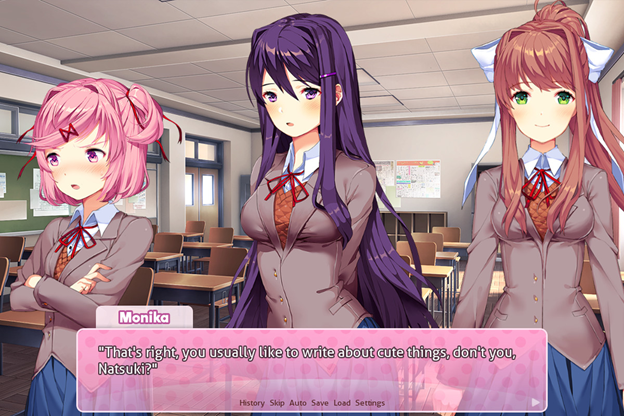
8. DOKI DOKI LITERATURE CLUB! / Team Salvato / 2017
Not to be a tease, but saying less about this one really is for the better. Anyone who has spent a moderate amount of time on Steam in the past two years has probably bumped into DOKI DOKI LITERATURE CLUB! at least once by this point and wondered why a free-to-play anime dating simulator (that isn’t smut) is trending so high. The secret is pretty much out at this point, but if you’ve somehow avoided the hype, you owe it to yourself to dive into one of the most visceral works of horror (yep) ever made, in any medium. DDLC! is a masterclass in bait-and-switch design, and even the obvious tell of the very-much-necessary content warnings upon launching the game do not prepare the player for what is about to come. Even with those warnings in mind, even after seeing dozens of posts online that were about as coy as this blurb, I was still thrown by how viciously and abruptly DDLC! pulled the rug out from under me. Though about as short and medium-bending as the aforementioned P.T., DDLC! manages to be an even more impressive accomplishment for it’s creator considering it is his debut title. Here’s to the future success of Dan Salvato, and the hundreds of shrinks whose offices will be flooded after the next product of his twisted imagination is unleashed on the internet. [Ed Dutcher]
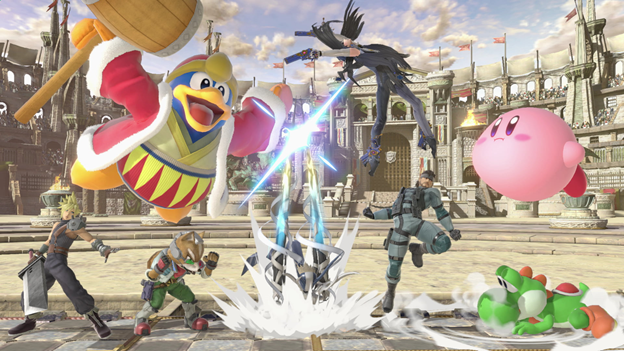
7. SUPER SMASH BROS. ULTIMATE / Bandai Namco Studios and Sora Ltd. / 2018
I’m seven again. Through the magic of SUPER SMASH BROS. ULTIMATE, I’ve been relieved of the crushing anxieties that have come to define my adulthood and have returned to a state of blissful ignorance. So dynamic, so vast, and so clean is ULTIMATE that while I’m playing it, I go from 9-to-5 sad sack to impish ass kicker. SUPER SMASH BROS. MELEE was the first videogame I ever played, and I’ve probably put more hours into the SMASH franchise than any other form of media. I love this game so much, to the point that I neglected most of 2019’s landmark releases to instead hold a GameCube controller and slam hapless children to the edges of the screen.
Personal bias aside, it’s not hard to make the case that ULTIMATE is the best SUPER SMASH BROS. game ever, as well as one of the best fighting games of all time. From the gigantic, ever-expanding roster that somehow remains thoroughly balanced, to the intriguing single-player adventure mode, to the utterly satisfying new addition of Dramatic Finish freeze frames, ULTIMATE simply does it all.
SMASH ULTIMATE transcends genre. It’s a fighting game that can be played as a party game with a group as large as eight. Items and handicaps are built in to take care of skill differential, and so much consideration has been put into balance that you never have to feel bad about taking a particular character. It’s just as fun to take seriously as it is to observe passively, something that’s become important to me as an Old Gamer. No matter what the future of gaming holds for me, I can almost guarantee it’s going to involve a great deal of Smashing. [Dan Blomquist]

6. RED DEAD REDEMPTION 2 / Rockstar San Diego / 2018
The greatest indicator of quality in media is, more often than not, how well it can immerse its audience in an experience. And in a decade where the best games are predicated on equal parts spectacle and authenticity, RED DEAD REDEMPTION 2 stands as arguably one of the most ambitious titles in recent memory. The folks at Rockstar are no strangers to creating vast sandboxes for players to explore, giving us bustling cityscapes and a million ways to let loose some cinematic wanton destruction (see: GTA V elsewhere on this list).
And yet, it wasn’t until “Grand Theft Horse” where the grandiose open-world sandbox being touted didn’t just look alive, but genuinely felt it as well. RED DEAD REDEMPTION 2 is the exemplar of a game that uses every tool in its arsenal, from exquisite sound design, to meticulous visual detail, to deliberately paced story and gameplay in order to place players into a believably dynamic world, one that encourages them to just take their time and soak in the minutiae.
But perhaps the biggest accomplishment RDR2 pulls, more so than any technical or visual polish could be attributed to, is that in the hundreds of hours I spent with Arthur Morgan, not once did it feel like I was wasting my time. Whether it was robbing a stagecoach, throwing fists in drunken bar brawls, or sitting around a roaring campfire trading stories with a stranger I’d never see again. Not once in my time exploring the dying Wild West did I tire of listening to the local wildlife, run past some new blip on the map, or skip out on petting a good boah whenever I rode into town, even if I had done them all hundreds of times before. In short, it never felt like I was playing a game. I never owned the world I was interacting with: I was just a part of it. And if that isn’t some testament to RDR2’s excellence, I don’t know what is. [Jon Farah]
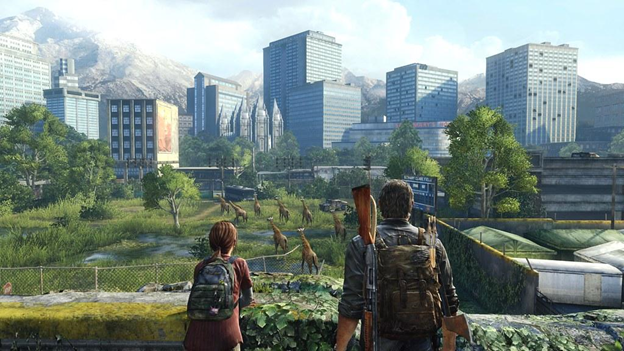
5. THE LAST OF US / Naughty Dog / 2013
Between THE LAST OF US and the Uncharted series, Naughty Dog firmly established itself as the decade’s most reliable generator of pulsating action blockbusters, games that are at both times thrilling and heartwrenching. Few developers quite understand cinematic language like Naughty Dog. Their exceptional command of camera composition and careful layering of plot developments have made them one of gaming’s most important visionaries. Hell, they’re among the very few game developers that have had video essays made about them by Film Screenplay academics! With THE LAST OF US, Naughty Dog delivered a deeply affecting survival horror game, a thrilling road trip and a touching father/surrogate-daughter narrative. It’s a game that perfectly understands how to balance the bleak cynicism of its vicious exterior (from the game’s zombielike Clickers to duplicitous cannibals) with the serene, stripped-down beauty of its giraffe scene. Few games get this balance right, never overstay their welcome, tell a wholly satisfying story, and deliver outstanding combat mechanics to boot. Oh, and the online mode absolutely whips! [Sergio Zaciu]
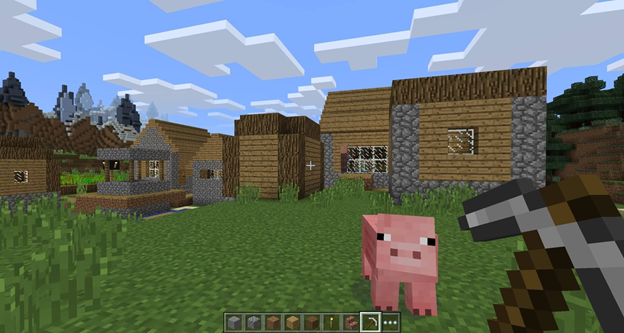
4. MINECRAFT / Mojang / 2011
MINECRAFT is the unofficial LEGO game. It’s the everything game. It was FORTNITE before FORTNITE, and there’s a strong argument that it’s the reason FORTNITE exists in the first place. It redefined crafting, open world games, and the concept of “survival.” It cursed us all with a vague but oppressive knowledge of “procedural generation.” It’s one of the best things to happen to YouTube and one of the most valuable things Microsoft has had the pleasure of purchasing. Many kids learn who “Steve” is around the same time they learn who Mickey Mouse is. It’s visually iconic, immediately recognizable, and yet somehow still rough around the edges. It changed the way games were released and has thoroughly diluted the meaning of several English language words (Alpha, Beta, 1.0, nothing means anything anymore!).
MINECRAFT is a game where you get dumped in a strange land created just for you, with weather, a day-night cycle, and a variety of friendly and antagonistic creatures. It presents you with nothing but your own blocky hand and the basic assumption that you’ll do whatever you want. It’s entirely self-directed, without narrative and with a broad ability to add-on and customize basically everything about the base game. MINECRAFT can be played with others or entirely alone. It’s a solitude simulator, but also an odd little exercise in community building. The game made a huge splash that has reverberated throughout the industry, but what’s truly exciting is the types of games the generation of players it ushered into the space will go on to make. [Ian Campbell]
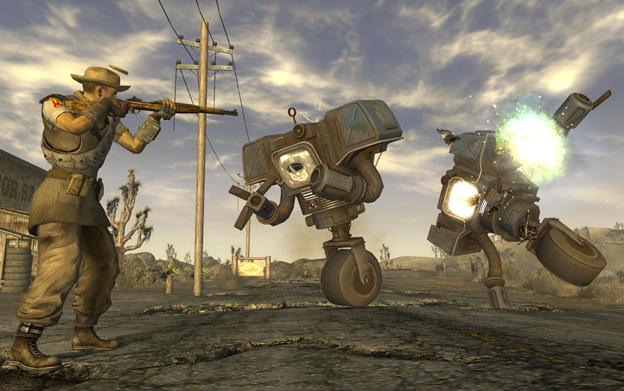
3. FALLOUT: NEW VEGAS / Obsidian Entertainment / 2010
I was told that I could not write the lyrics to “(I’ve Got Spurs That) Jingle, Jangle, Jingle” for this particular entry, even though I maintain that it would serve to give a proper explanation for why FALLOUT: NEW VEGAS makes this list. I think that any game that impacts the public consciousness so much that a few measures of one song instantly brings the listener back to the last time they played has to have done something right somewhere. Even though Bethesda couldn’t afford the rights to any Elvis Presley recordings after they’d created a whole faction consisting of Elvis impersonators, every song on there is pretty much a bop. NEW VEGAS took what had been accomplished in FALLOUT 3 and expanded upon it, increasing the size of the map and updating many of the RPG elements. It also presented the player with optional survival mechanics, challenging them to survive in the Mojave by staying fed and hydrated and not wandering into a den of irradiated monsters, and frankly the first time I played it I was very glad it was optional. But one of the most memorable aspects is the cowboy/high-roller aesthetic, with the requisite sci-fi mixed in. Figuratively speaking it’s a bright, colorful world full of bizarre characters and personalities, warring factions, and Chandler Bing, all with the trademark gallows humor of a world crawling back from self-imposed destruction to find that maybe preserving what remains isn’t worth it. All these factions mean more than one way to play the game, and gamers spent the decade bonding over who sided with who and distrusting on a visceral level anyone who sided with a particular faction, praise be to Caesar. Plus with the DLC support NEW VEGAS got there were so many more moments that embedded themselves in the collective unconscious, so many characters that served as jumping-off points for future designers, and gameplay so hot it almost made you wish for a nuclear winter. [Steven Porfiri]
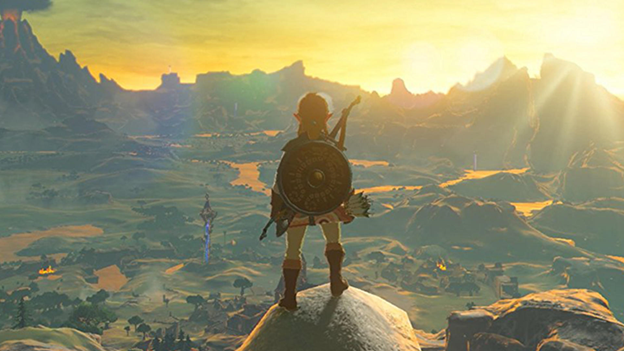
2. THE LEGEND OF ZELDA: BREATH OF THE WILD / Nintendo / 2017
THE LEGEND OF ZELDA has always been, far and away, my favorite gaming franchise. High fantasy sword and sorcery meets technology and romance in a timeless blend of magic and adventure. The sweeping orchestral scores reminisce of Miyazaki epics, as do the characters and locale. It’s the RPG every other aspires to be.
Before 2017, I would have said OCARINA OF TIME was the best game of all time. It still ranks highly in my overall list. But its spiritual successor, BREATH OF THE WILD, has far surpassed the master. BOTW takes the Zelda formula and flips it on its head. Sure, you’ve got your dungeons, your heart points, your Gorons, Gerudo, and Zora. But BOTW takes Hyrule and makes it real.
Every inch of the expansive, daunting map serves a purpose. Hyrule is designed to be challenging, deadly, and gorgeous. And, while the plot calls you to action, you really don’t have to run right out and save the princess. BOTW lets you breathe and encourages you to take your time. Drink in the sights, talk to every NPC, and throw yourself at monsters that shouldn’t have any right to be as fatal as they are. (Looking at you, Lynels.)
Nearly three years later, I still haven’t beaten the game. There’s literally that much to do. Even now, I’m discovering new surprises, even in well-trodden parts of the map. The attention to detail is as nauseating as it is awe-inspiring. Very few games today receive the level of craft and consideration that BOTW was given. Everything, from the clothes, to the sound design, to the weapons and cooking feel intentional. And there’s never just one way to do something. BOTW responds to your instincts, your drive, and your reasoning skills, pivoting around your goals. It’s a game that feels tailor-made to you, in a way that no other game I’ve experienced ever has.
Like many of the games on this list, BOTW blends realism, wish-fulfillment, adventure, masterful storytelling, and gorgeous animation into a challenging, innovative opus. And while ZELDA games never feel stale, BOTW pushes the envelope of a familiar franchise. By the time its highly anticipated sequel arrives on the scene, maybe I’ll finally have mustered the courage to face Calamity Ganon. Until then, I’ll just keep climbing, cutting, exploring, and taking a few hits to my hearts. [Tracy Nicoletti]
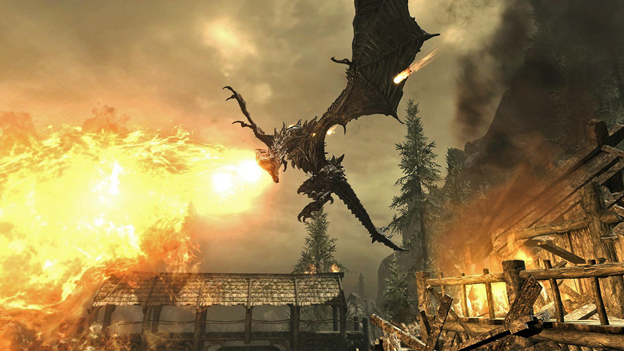
1. THE ELDER SCROLLS V: SKYRIM / Bethesda Game Studios / 2011
In many ways, the most glowing recommendation of SKYRIM’s pervasive influence on the past decade in gaming is the fact that its perpetual cycle of re-releasing on new consoles is rapidly careening towards the memetic. But considering that perhaps only the TI-84 graphing calculator is safe from echoing a call of “Fus Ro Dah,” we’re left wondering just what’s in the water of Tamriel’s northernmost province that’s kept a full two generations of gamers coming back. For one reason or another, this decade saw a reclamation of fantasy by mainstream sensibilities, and combined with the steadily increasing star of “blockbuster gaming,” the stars were aligned for SKYRIM to earworm its way into the cultural consciousness. And what a fantasy blockbuster game it is! To this day, the sense of scope present in every single pixel is impossible not to marvel at, with sprawling locales such as the various Dwemer Ruins scattered across the map incredibly easy to get figuratively and literally lost in, a game that did the most to imbue as much wonder and adventure into every nook and cranny as it could. What’s more, even if you’ve no doubt heard it before, there’s simply no way around the fact that the world of story redefines the parameters of immersive, a vanguard of games this decade where completing the main storyline, a veritable accomplishment in its own right, played a distant second fiddle to exploring every possible remote corner of what laid around you. While that first ascent to the Throat of the World belongs in any cultural repository of gaming in the 2010s, what will stick with me on my deathbed reflecting on SKYRIM are the myriad sidequests undertaken and auxiliary characters interacted with. It’s the fight-or-flight response upon stumbling out of Helgen and soon coming across Anise’s Cabin, learning the dark “secret” of the humble old lady living inside. It’s sneaking into all the shops you’ve been buying assorted items at throughout the game after hours and cooking the books as radiant quests for the Thieves Guild. It’s stopping to catch your breath and hearing the full performance of the bard at the Windpeak Inn in Dawnstar after defeating the Daedric Vaermina and freeing the townsfolk from their chronic nightmares. It’s the cold-hearted assassination of Vittoria Vici at her wedding for the Dark Brotherhood that would make ol’ George R.R. blush. It’s the cheeky townspeople you take up fights with, the spouses you curry favor with and romance, and the children you adopt (with the Hearthstone DLC downloaded, of course). “Cinematic” was a descriptor tossed around a lot for games of this caliber this decade, but SKYRIM went above and beyond. For me and many others, SKYRIM was truly an escape, a pitch-perfect, lovingly tended, and exquisitely detailed transportive world that was always just a laptop boot-up away. It was the first time reading LORD OF THE RINGS. It was every imaginary charge into battle I came up with in my head as a kid. It was one Hell of a good time, and I didn’t experience anything else quite like it in the 2010s. It says a lot about SKYRIM that I’m not all that convinced that sentiment will change in the 2020s. [Thomas Seraydarian]







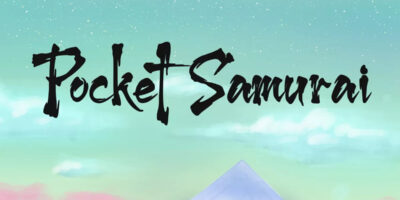
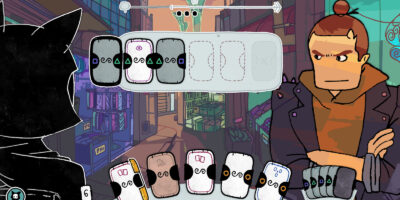







[…] appearing in every permutation imaginable: from being a frequent necessity in monumental RPGs like SKYRIM or THE WITCHER 3, to base building for the likes of FALLOUT 4 and DON’T STARVE, to even having a […]